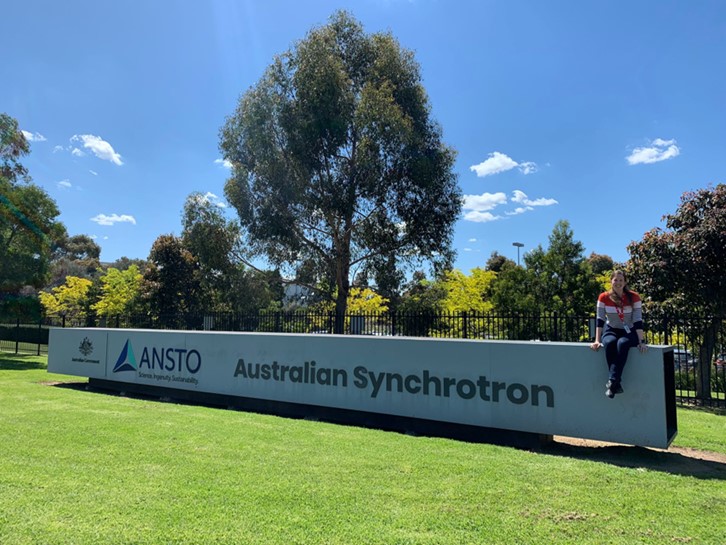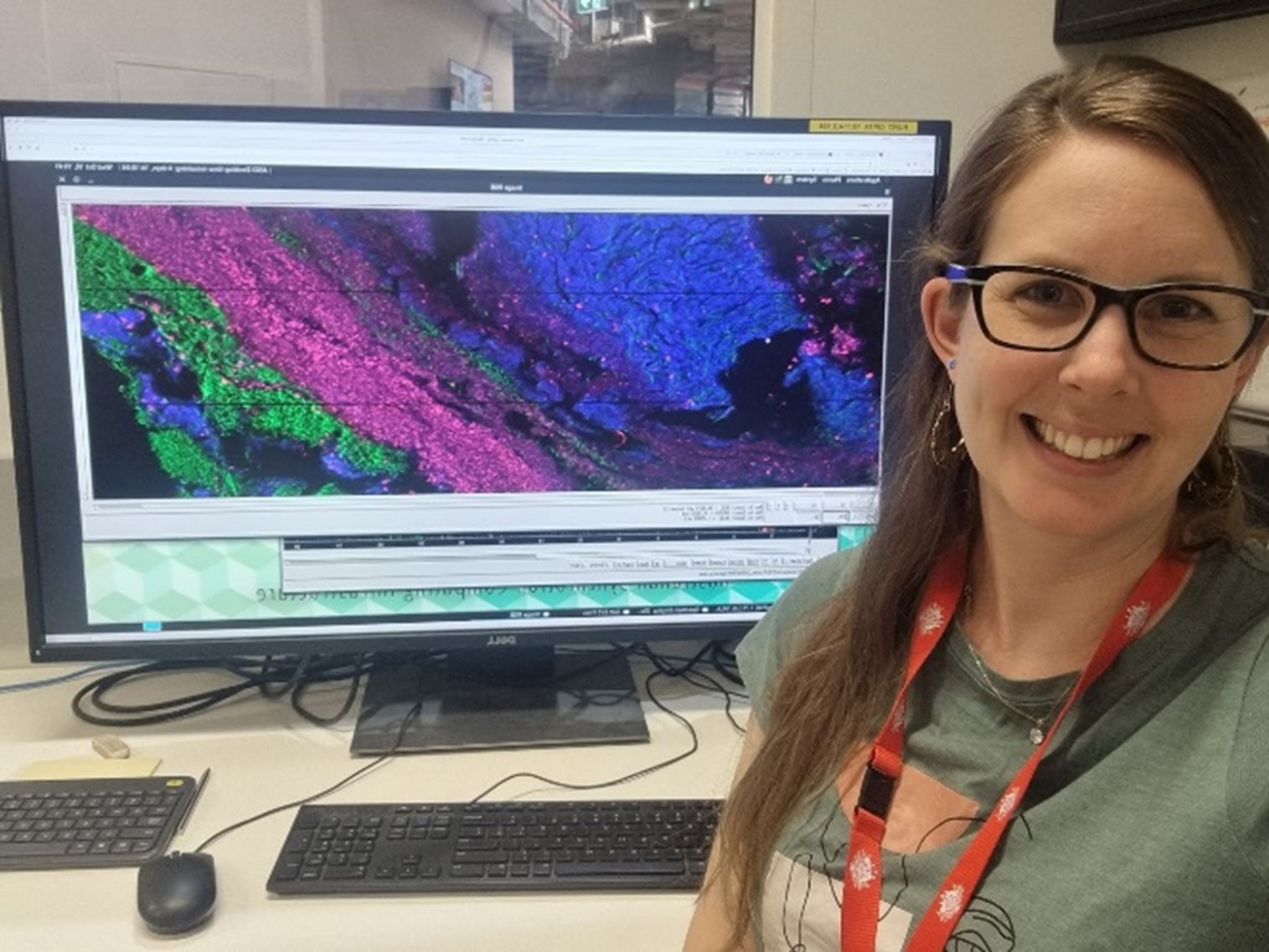AusIMM EEF scholarship recipient conducts research using Australian Synchrotron
Loren Nicholls MAusIMM was awarded a Postgraduate Education Endowment Fund (EEF) scholarship in 2023 for her PhD project entitled “Geometallurgical characterisation of copper mine tailings for cobalt recovery and economic rehabilitation”.
In order to understand the tenor and deportment of cobalt in both primary and secondary (weathered) minerals, Loren has utilised several microanalytical techniques including SEM EDS, microprobe, μXRF, XRD, MLA, TIMA and laser ablation.
However, the fine grained (< 10 μm) and complex nature of the tailings material has tested the limits of these standard analytical methods, so Loren turned to the Australian Synchrotron in Melbourne for a more detailed investigation.

Loren at the Australian Synchrotron.
The Australian synchrotron is a particle accelerator that uses magnets to accelerate electrons to just under the speed of light (299,792 km/s) in a circular orbit. This produces a beam of light more than a million times brighter than the sun that is diverted off the storage ring into tangential ‘beamlines’. This energy is then harnessed to answer cutting-edge science questions ranging from medical research to planetary science, cultural heritage investigations, agriculture and food technology, and environmental and geology applications.
XANES (X-ray absorption near-edge structure) mapping utilises the XFM beamline to detect the oxidation state of elements in a sample. When a sample is hit by the x-ray beam at an energy above its absorption edge, a core electron is excited and leaves a hole in the atomic core level which is then filled by an outer electron, releasing a ‘fluorescent’ x-ray. The absorption energy of an element changes with its oxidation state and the other atoms that surround it. XANES maps absorption features like pre-edge features, edge location, the white line zone and post edge features which are indicative of oxidation state and what other atoms it is bonded to. This is useful when trying to understand the host and gangue mineralogy of a particular element, like cobalt in this case. Once the hosts are well characterised, appropriate mineral processing flowsheets can be designed to recover the value.

Loren processing XFM data at the Australian Synchrotron.
The experiment lasted 72 hours and was a great success, with very clear and distinctive XANES features observed. The XFM beamline also produced some beautiful elemental distribution maps like those illustrated below, which help in understanding the spatial deportment and mobility of different elements, like iron, copper and cobalt.

Loren is excited to publish her results, finish her PhD (2024) and then return to industry to contribute her knowledge back into bridging the disciplines of geometallurgy, geology and environmental science.